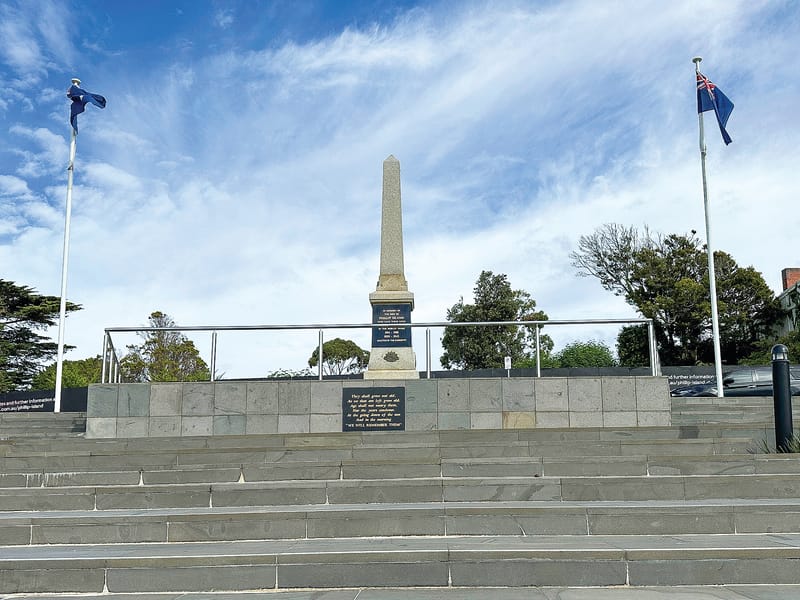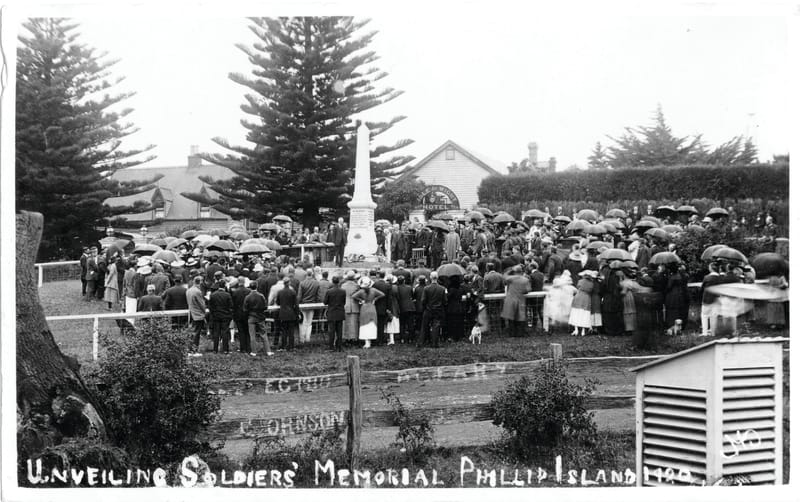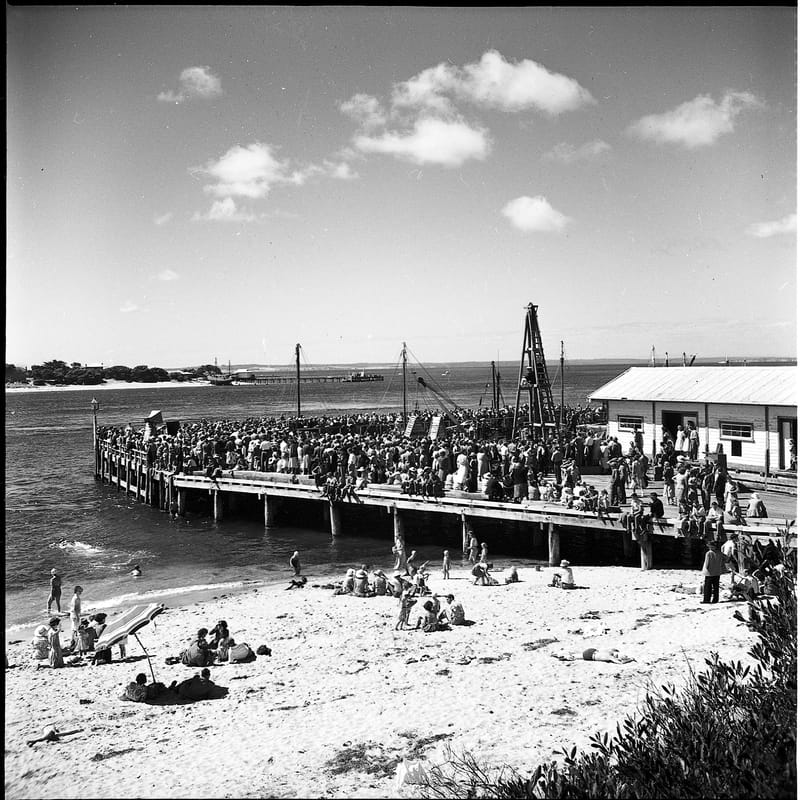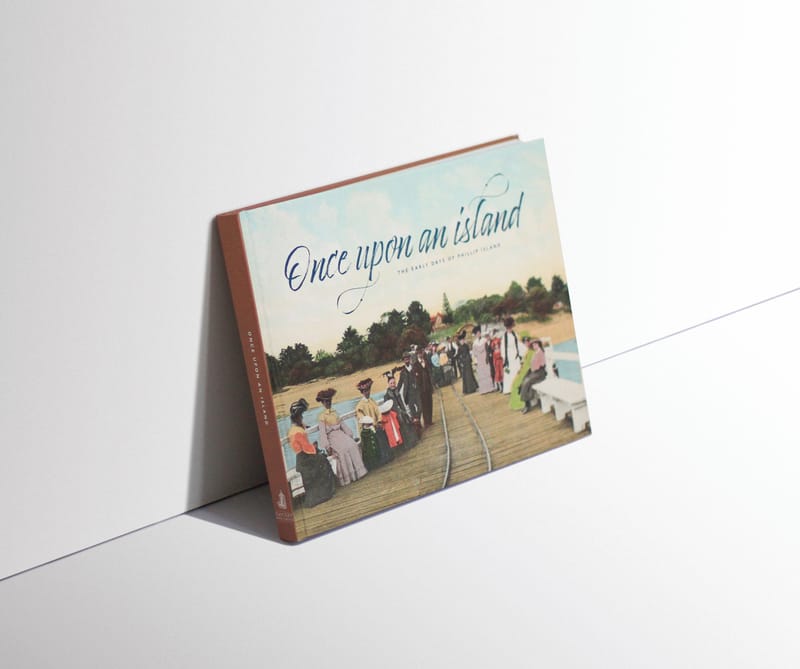The island’s ancient history
The island’s ancient history These days Cat Bay is better known for its surf breaks, Swan Lake for bird watching, and Forrest Caves boasts geology worthy of exploration. Few people, however, realise that for millennia these areas were feasting...
The island’s ancient history
These days Cat Bay is better known for its surf breaks, Swan Lake for bird watching, and Forrest Caves boasts geology worthy of exploration.
Few people, however, realise that for millennia these areas were feasting places.
Thanks to the work of archaeologists, we now know what was on the menu for the Boonwurrung/Bunurong people of Phillip Island, who were believed to visit the island each summer.
Middens show they were partial to mutton bird and emu eggs, fish and seals.
One of the main camping sites at Forrest Caves had two sections – the “workshop” where implements have been found, and the “kitchen”, where charcoal and the refuse of bones and shells have been unearthed.
The island's first settlers, the McHaffies, found numerous chippings from stone implements near Cat Bay, indicating this was a manufacturing site.
A midden at Point Grant - dated at about 2000 years - contained various shells including limpets and abalone, while the bones of penguin, wallaby, possum and small amounts of seal and fish were also present.
Stone tools, mainly flint flakes, have been discovered as well as charcoal and ochre.
These archaeological finds - protected by law and therefore illegal to interfere with them or take anything from them - help us guess at the lifestyles of the first Australians, long before European occupation.
As Joshua Gliddon wrote in his book “Phillip Island: In picture and story”, reconstructing these scenes is “history you can handle”.When Phillip Island celebrated its 150th anniversary in 2018, many locals highlighted the fact that the area’s history spanned a considerably longer period.
Sadly, not all indigenous history is as easy to handle as that of diet.
It is possible that the Boonwurrung/Bunurong have been in Victoria for 40,000 years.
Following European settlement, their dispossession occurred very quickly – within 40 years.
At the 2016 census, 303 people, or 0.9 per cent identified themselves as having Aboriginal or Torres Strait Islander origins in Bass Coast.
Clans
The Boonwurrung/Bunurong people are the indigenous people of south-eastern Victoria, with more than 60 recorded variations to their name.
Their traditional land extends from the Werribee River in the north-west, down to Wilsons Promontory in the south-east, taking in the catchments of the old Carrum swamp, Western Port Bay and the Tarwin River, and including Mornington Peninsula, Phillip and French Islands.
The Boonwurrung/Bunurong were divided into six clans including the Yallock-Bullock, who lived around Bass River on the eastern side of Westernport.
Given their traditional lifestyle was dictated by the seasons, with an intimate understanding of the life cycles of the plants and animals of their country, they are understood to visit Phillip Island each summer, harvesting penguins and mutton bird eggs and young from November to March.
Their name for Phillip Island was Mallowl or Corriong.
According to the Phillip Island Historical Society’s Christine Grayden, the Yallock Bullock people are believed to have travelled from the mainland to Phillip and French Islands in six-person canoes made from a curved piece of bark cut from a suitable tree.
“The bark was too stiff to bend so was plugged at the ends using clay,” Christine says.
Moonar’mia, or Churchill Island, is believed to have been a sacred site for the Yallock Bullock people, but archaeologists and historians do not know what the other sacred sites were on the island.
The Boonwurrung/Bunurong people are part of the Kulin Nation.
Among the members of the Kulin Nations, many aspects of their daily lives, beliefs, dreamtime and kinship patterns were similar.
They swapped girls to be brides to strengthen the ties.
Twice a year they held joint meetings on the site of what is now the Melbourne Central Business District.
At those times the Boonwurrung/Bunurong would camp at what is now the site of Government House in the Botanic Gardens.
These were times for ceremonies, corroboree, exchanging of gifts, trading in greenstone (for axes) and possum skins, arranging marriages and settling disputes.
It was the responsibility of the head man to ensure that the clan’s country was cared for properly and the plants and animals were not over-harvested.
Access to land and resources was sometimes restricted depending on the state of the resource in question. For example; if a river or creek had been fished regularly throughout the fishing season and fish supplies were down, fishing was limited or stopped entirely by the clan who owned that resource until fish were given a chance to recover.
As with most other Kulin territories, penalties such as spearings were enforced upon trespassers.
Other important people were doctors, warriors, interpreters of signs and dreams and charmers who could summon or dismiss rain.
Dispossession
The dispossession of the Boonwurrung/Bunurong people occurred very quickly – within 40 years.
At the time of the commencement of white exploration in Western Port, the Boonwurrung/Bunurong people had suffered extensively through a plague of smallpox (believed to have halved the Victorian Aboriginal population), as well as a war with the neighbouring Braiakolung and Brataolung people.
White people arrived in Western Port from 1798, and a successive wave of events from then contributed to the dispossession of the Boonwurrung/Bunurong people.
According to the explorer Hovel, sealers are believed to have taken “hundreds” of Boonwurrung/Bunurong women, causing huge dislocation to the daily lives of the clans and the ceremonial and intermarriage lives of all of the people.
While some of the women were treated reasonably well by the sealers, many of the sealers were hard men and ex-convicts, and the Phillip Island Historical Society Christine Grayden says one woman at the time gave an account of how she was subjected to virtual slavery, rape and brutality.
The sealing industry operated through Bass Strait, including Seal Rocks on Phillip Island, from 1801 to 1830.
A report by Jules Dumont d'Urville in 1830 attributed the absence of Boonwurrung on Phillip Island due to the sealer’s behaviour.
As late as 1833, nine Woiwurrung and Boonwurrung women, and a boy were kidnapped and ferried across to the sealers’ Bass Strait island bases.
Christine says while smallpox caused deaths early in European settlement, the Boonwurrung/Bunurong – like other clans – also suffered from other imported diseases, such as syphilis.
“They were encouraged to wear European style clothing, which did not dry out quickly once wet and which therefore contributed to the Aborigines getting pneumonia,” she says.
“Deprived of traditional and effective medicine sources, and having no immunity against the new diseases, the Aborigines quickly succumbed in large numbers.”
Another event that led to the dispossession of the Boonwurrung/Bunurong people was an environmental one.
“From the 1830s, hundreds of tons of black wattle bark was stripped by wattle bark (“mimosa”) collectors and shipped out from San Remo to be used in the tanning trade,” Christine says.
“The black wattle was a staple food, fibre and medicine tree for the Bunurong, and the decimation of the black wattle forests robbed the people of a central part of their lives.
“While we know little of relations between wattle bark collectors and the Aborigines, we do know of at least one instance where five Boonwurrung/Bunurong men were killed by wattle bark collectors as the Aborigines slept. It is possible that other similar incidents occurred.”
Finally, much of the land around Western Port was taken up by white settlers in the 1840s, depriving the remaining Boonwurrung/Bunurong of their traditional lands and food sources.
According to Wikipedia, by 1839 the Boonwurrung had been reduced to 83 people, with only four of 19 children under four years old, from a probable pre-contact population of greater than 300 people.
By 1850 Protector William Thomas estimated just 28 Boonwurrung people.
A FEW BOONWURRUNG WORDS:
Port Phillip Bay - Nairm
Water - Banny
Fish - Gurnbak
Kangaroo - Guyeem
Man - Guleeny
Women - Bagurrk
Children - Bubup
Camp - Weelam
Wind - Munmut
Dance/ceremony – Ngargee
from Carolyn Briggs (Boonwurrung Elder) and Steve Parker (descendant of traditional owners of Boonwurrung)






